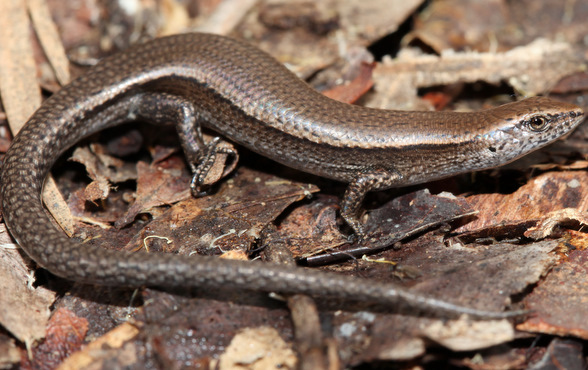Behaviour
Diet
Small insects and other invertebrates.
Movement
Active day and night, although it sometimes basks in the sun to raise its body temperature. It forages amongst leaves, grasses and debris, particularly in gardens and bushland areas.
Breeding
Mating occurs in spring after which the female lays between one and seven small, white rubbery eggs. The eggs are often deposited in a nest shared by other individuals, and up to 250 eggs have been found together. The eggs hatch in mid-summer and females can have more than one clutch per season in years of good rainfall. Second matings occur in late summer and the female stores the sperm to fertilise her eggs the following spring. After those eggs are laid, another mating in spring will produce another clutch.
Field Guide
Improve your identification skills. Download your Garden Skink (Northern) guide here!





